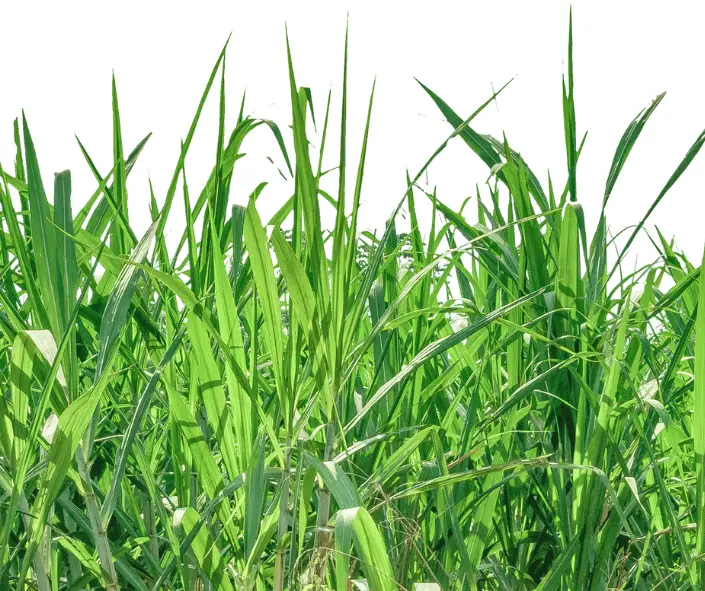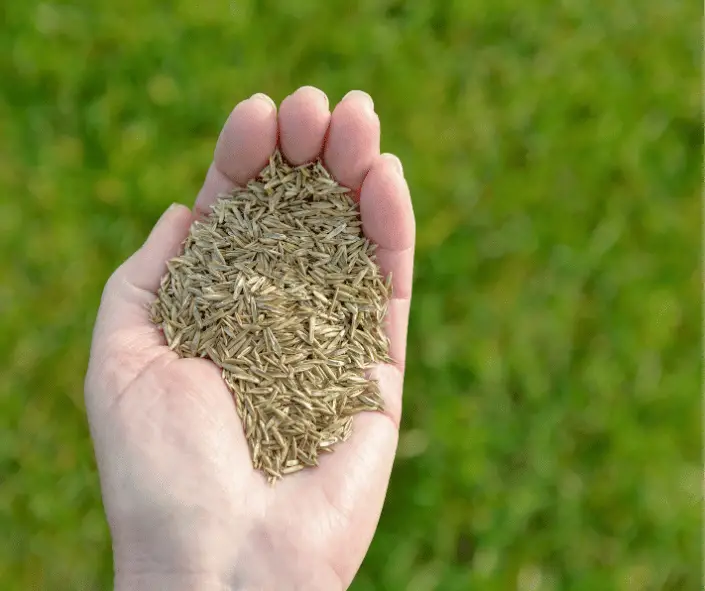The Importance of Choosing the Best Grass for Clay Soil
Choosing the best grass seed for Clay Soil can be overwhelming, especially if you live in an area with clay soil. Clay soil can be challenging to grow grass in because of its dense particles and poor drainage. In this article, we will discuss the best grass for clay soil, the characteristics of different soil types, and the importance of organic material in soil.
Understanding Soil Types
Before choosing the best grass for your lawn, it’s essential to understand the characteristics of different soil types. Soil can be classified into three categories based on the size of its particles: sandy soil, loam soil, and clay soil.
Sandy soil has the largest particles, which means it drains water quickly and is not able to hold nutrients well. Loam soil is a mixture of sand, silt, and clay particles, making it the ideal soil for growing grass. Clay soil has the smallest particles and retains water, making it prone to becoming waterlogged and compacted.
The Importance of Organic Material in Soil
Organic material, such as compost, grass clippings, and other natural matter, plays a crucial role in improving soil structure and providing essential nutrients for your lawn. Organic material helps break up the dense clay particles and improve drainage, allowing water and air to penetrate the soil.
Adding organic material to your soil can also help reduce the amount of water your lawn requires, as it helps the soil retain moisture for longer periods. Organic material is also a source of humic acid, which is essential for the growth and development of plant roots.

Best Grass for Clay Soil
The best grass for clay soil is a grass type that has a robust root system and can tolerate heavy clay soils. Cool season grasses, like perennial ryegrass and Kentucky bluegrass, are a more popular choices for clay soil in cooler climates. They have deep root systems that can penetrate the soil, making them drought-resistant and suitable for areas that receive less rainfall.
Fine fescues, such as Chewings fescue and red fescue, are also a great option for clay soil.
Warm-season grasses, such as Zoysia grass and Bermuda grass, are better suited for warm climates with heavy clay soils. They have a deep root system that can penetrate the soil and provide excellent drought resistance.
Thinking of using rolls of turf use our turf roll calculator
Tall fescue grass seed is another popular choice for clay soil, as it has deep rhizomes that can penetrate the soil, making it ideal for areas that receive a lot of foot traffic, such as public parks and golf courses.
The Best Way to Choose the Right Grass Seed for Your Lawn

Choosing the right grass seed for your lawn can be a dificult task. However, by understanding the characteristics of different soil types and the best grasses for clay soil, you can make an informed decision.
The first step is to find out the type of soil you have by performing a soil test. A soil test will tell you which nutrients your lawn needs and how much fertilizer to apply. Soil testing kits can be purchased at a garden center or online, or you can contact a professional soil testing laboratory to test your soil.
Once you have determined the type of soil you have, the next step is to choose the best grass seed for your location and climate. Cool season grasses are best suited for cooler climates, while warm-season grasses are ideal for hotter climates.
It’s also important to consider the amount of sunlight your lawn receives. If your lawn is in full sun, you may want to choose a grass type that can handle the heat, such as Bermuda grass or Zoysia grass. If your lawn is in partial shade, you may want to consider fine fescues, as they are shade-tolerant and can thrive in areas with less sunlight.
One more factor to consider when choosing the right grass seed is the size of your lawn. If you have a small area, such as a backyard or a front yard, you may want to choose a grass type that requires less maintenance, such as fine fescues or buffalo grass seed. For larger areas, such as golf courses or public parks, you may want to choose a grass type that can handle heavy foot traffic, such as tall fescue grass seed.
What’s The Best Time of Year to Plant Grass Seed?
The best time of year to plant your grass seed depends on the type of grass you are planting and your location. Cool-season grasses should be planted early in spring or late summer and warm season grasses should be planted in the late spring to early summer.
It’s important to note that clay soil can take longer to warm up in the spring, so you may want to wait until the soil temperature is at least 50°F before planting your grass seed. This will ensure that the seed germinates properly and that your lawn grows healthy and strong.
Helpful Tips for Growing a Healthy Lawn in Clay Soil
Growing a healthy lawn in clay soil requires some extra effort and attention, but it’s not impossible.
Here are some helpful tips for growing a beautiful lawn in clay soil:
- Add organic material to your soil: As previously mentioned, organic material can help break up the dense clay particles and improve drainage in your soil. You can add compost, grass clippings, or other natural matter to your soil to improve its structure and provide essential nutrients for your lawn.
- Water your lawn plenty: Clay soil can retain water well, but it can also become waterlogged and dense. It’s important to water your lawn deeply and frequently to encourage deep root growth and prevent waterlogging.
- Mow your lawn regularly: Regular mowing can help promote healthy grass growth and prevent weeds from taking over your lawn. It’s important to cut your lawn to the right height for the type of grass that you have, as cutting your grass too short can damage the roots.
- Aerate your soil: Aerate your soil to help improve drainage and will allow air and water to penetrate the soil.
- Fertilize your lawn: Fertilizing your lawn can provide essential nutrients for your grass and help it grow strong and healthy. It’s important that you choose a fertilizer appropriate for the type of grass you have and to follow the manufacturer’s instructions for application.
Choosing the best grass for clay soil requires some research and consideration, but it’s essential for growing a healthy and beautiful lawn. Understanding the characteristics of different soil types and the importance of organic material in soil can help you make an informed decision when choosing the right grass seed for your lawn.
By following these helpful tips for growing a healthy lawn in clay soil, such as adding organic material to your soil, watering your lawn deeply, mowing it regularly, aerating your soil, and fertilizing your lawn, you can achieve a luscious and green lawn that will be the envy of your neighborhood.
The Benefits of Planting Grass Seed in Clay Soil
Clay soil can be a challenge for gardeners and lawn enthusiasts alike, but with the right approach, it can be a great place to grow a beautiful and healthy lawn. While clay soil can be dense and slow to drain, it also has many beneficial qualities that make it a great choice for planting grass.
One of the most significant benefits of planting grass seed in clay soil is that it is naturally rich in nutrients. Clay soil contains many minerals that are essential for healthy plant growth, including iron, calcium, and potassium. Additionally, the small particles in clay soil hold on to nutrients, preventing them from being washed away by rainwater or irrigation.
Another benefit of planting grass in clay soil is that it can help reduce erosion. The dense structure of clay soil can help hold soil in place, preventing erosion and soil loss. This is particularly important in areas with steep slopes or in regions where there is heavy rainfall or strong winds.
Clay soil also tends to retain moisture well, which can be a great advantage in areas with hot, dry summers. The moisture retention of clay soil means that you will need to water your lawn less frequently, which can save you time and money on your water bill.
Planting Grass Seed To Improve Soil
Planting grass in clay soil can help improve soil quality over time. Adding organic matter to your soil such as compost or grass clippings, to your clay soil will help break up the dense clay and improve drainage. Over time, this can help create a healthy and robust soil structure that supports healthy plant growth.
When choosing your grass seed for clay soil, it’s important to consider things such as soil type, climate, and the overall size of your lawn. Cooler season grasses, such as perennial ryegrass and Kentucky bluegrass, are great choices for colder climates, and warm-season grasses, such as zoysia grass and common Bermuda grass, are better suited to hotter regions.
No matter what type of grass you choose, planting grass in clay soil can be a great way to create a lush and healthy lawn that will be the envy of your neighbors. With some careful planning, proper maintenance, and a little patience, you can transform your clay soil into a thriving landscape that you can enjoy for years to come.
The Advantages of Choosing Native Grasses for Your Lawn
When it comes to choosing the right grass for your lawn, it’s important to consider not only your soil type and climate but also the benefits of choosing native grasses. Native grasses are grasses that are indigenous to your region and have adapted to the local soil, climate, and environmental conditions over time.
The main advantages of choosing native grasses for your lawn is that they are well suited to the region’s growing conditions. Since native grasses have adapted to the local climate, soil, and pests, they are naturally more resistant to diseases and pests than non-native grasses. This means that you will spend less time and money on fertilizers and pesticides, and your lawn will be more resilient and healthy overall.
Another advantage of using native grasses is that they require a lot less water and maintenance than other non native grasses. Since native grasses are adapted to your region’s rainfall and soil moisture levels, they are naturally more drought tolerant and require less watering. Additionally, native grasses have deep rooting systems that will help them access water and nutrients from deeper in the soil, making them more resistant to heat and drought.
Native grasses are also beneficial for the environment, as they provide habitat and food for local wildlife, such as birds and insects. Non-native grasses often lack the ecological benefits of native grasses, and in some cases, can even be invasive and harmful to local ecosystems.
Choosing native grasses can also enhance the beauty and uniqueness of your lawn. Native grasses come in a variety of colors, textures, and growth habits, and can create a unique and attractive landscape that stands out from other lawns in your neighborhood.
When selecting native grasses for your lawn, it’s important to consider factors such as soil type, light exposure, and moisture levels. Some popular native grasses for different regions include buffelgrass and blue grana grass in the Great Plains, tall fescue grass seed in the transition zone, and red fescue and chewing fescue in cooler climates.
Overall, choosing native grasses for your lawn can provide numerous benefits, including reduced maintenance, improved environmental health, and enhanced beauty. By selecting the right native grasses for your region, you can create a lawn that is both sustainable and beautiful for years to come.
5 Tips for Maintaining a Healthy Lawn
Maintaining a healthy lawn can be challenging but with the right strategies, it’s definitely achievable.
Here are five top tips to help you keep your lawn looking green and lush all year long.
Water properly
It is most important to water your lawn properly like all aspects of maintaining your lawn. Your lawn needs about 2 inches of water per week, either from rainfall or irrigation.
It’s best to water deeply and infrequently rather than frequently and shallowly, as this encourages deep root growth and helps your lawn tolerate drought better.
Avoid watering your lawn during the brightest part of the day, as this will cause the water to evaporate before it has a chance to reach the grass roots.
Mow your lawn regularly
Regular mowing your lawn is essential for healthy grass. Make sure your mower blade is sharp and set to the right height for your grass type.
Never remove more than one-third of the grass blade at a time, as this can stress the grass and leave it vulnerable to diseases and pests.
Feed your lawn
The correct fertilizing for your lawn can provide the nutrients it needs to thrive.
Choose a fertilizer that’s right for your grass type and apply it according to the instructions.
Avoid to much fertilizer, as this can lead to excessive growth and weaken the lawn’s root system.
Aerate your lawn
Aerating your lawn involves removing small plugs of soil to relieve soil compaction and improve water and nutrient penetration. This can help your lawn’s root system grow deeper and stronger, and improve overall soil health.
Managing pests and diseases
Pests and diseases can cause havoc on your lawn if left unchecked. Keep an eye out for signs of damage such as brown patches or chewed grass blades, and take action immediately if you suspect a problem.
By following these simple tips, you can have your lawn looking healthy and beautiful all year long.
Remember to choose the right grass type for your soil and climate, and adjust your lawn care practices accordingly.
With a little effort and attention, you can enjoy a lush, green lawn that’s the envy of your neighborhood!
Conclusion
Planting grass in clay soil requires some extra effort, but it’s definitely achievable.
By amending the soil with organic matter, choosing the right grass type, performing a soil test, planting at the right time, and watering properly, you can grow a beautiful and healthy lawn in clay soil.
With a little patience and care, you can enjoy a lush green lawn that’s the envy of your neighbors.
Author Profile

- I have many qualifications and certificates in construction, such as City & Guilds, CPCS and CITB. These are the highest standards of training and competence in the industry. Whether you need help with plumbing, carpentry, bricklaying or any other trade, I’m here to help you succeed.
Latest entries
- March 6, 2024CalculatorsWall Tile Calculator: How Many Wall Tiles Do You Need
- February 29, 2024Roof Truss Cost Calculator
- December 31, 2023Wage Take Home Calculator
- December 30, 2023Day Rate Calculator


Comments are closed.